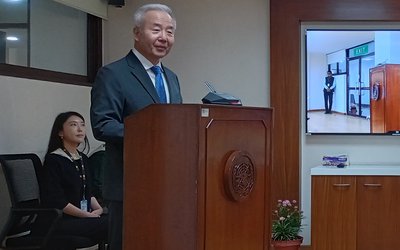
As Nepal is celebrating the International Girl Child Day with the aim to empower the girl children and adolescents by tackling violence against them, a 10-year old girl was sexually assaulted in far western Nepal.
Although Nepal has taken several steps to curb violence against girl children and adolescents, they continue to be easy prey to sexual and other kinds of violence. Most often, as the International Day of Girl Child is marked in five star hotels, nothing much changes on the ground.
According to the Nepal Demographic Health Survey 2011, one in every five women experience physical violence and one in 10 sexual violence. Nearly 1 in 10 adolescents aged 15-19 experience physical violence during pregnancy. Most often the violence is perpetrated by someone she knows, including her husband or another male family member.
Violence against women and girls is rarely a one-off, isolated event, and often recurs. For young girls, violence experienced during adolescence can determine the trajectory of a girl’s life. During a stage at which key investments and support can set young girls on a path towards empowerment, physical and sexual violence, discrimination and harmful practices can send them down a negative spiral with lifelong consequences, not just for themselves, but for societies and future generations.
The message of the recent conference on the theme was that when adolescent girls are empowered to be leaders and decision-makers, it is beneficial for all. They grow up to become empowered women with increased earning potential as well as serve as active citizens and change agents in their communities. However, empowering adolescent boys and their engagement is also equally important to end the cycle of violence.
“I would like to commit on behalf of Nepal Government, Ministry of Women, Children and Social Welfare that the Ministry will focus on advocacy and programs against violence. It will invest in adolescent girls’ empowerment; on making infrastructures, services and technology adolescents friendly and ensure increased participation of adolescent girls in social and economic activities," said Minister of Women, Children and Social Welfare, Nilam K.C. (Khadka)
As in the past, celebrations of the International Day of the Girl Child (IDGC) in Nepalfeatured a three-day Girl Power Conference. Attended by adolescent girls and boys from across Nepal, the aim of IDGC is to empower them to be change agents for ending various forms of violence against girls.
The Ministry of Women, Children and Social Welfare is leading the celebrations this year with support from a coalition of organizations, including Aamaa Milan Kendra, CARE Nepal, CWIN-Nepal, Equal Access Nepal, Plan Nepal, Restless Development, UNESCO, UNFPA, UNHCR, UNICEF, VSO, Women Lead and Yuwalaya.
According to a study, forty-two percent of the population in Nepal is under 18 years of age, making investments in children and adolescents especially important in shaping national development. On this front, Nepal has made remarkable progress in the last 40 years.
Yet, approximately 620,000 children aged 5-17 are engaged in hazardous work while some 13,000 girls are being sexually exploited in Kathmandu. Violence against children and adolescents occurs everywhere – at home, families, schools, communities and public places. It occurs during conflict and even in times of peace. It manifests itself in its most prevalent forms of domestic and sexual violence.
According to a government survey conducted in 2010, approximately 83 percent of children aged between 2 and 14 years said they were subjected to some form of violent discipline at home or at school, or in their community. This rate is indeed very high.
“In Nepal, child labor and trafficking receive a lot of media attention and rightly so, because they are abhorrent and unjustifiable. However, a lot of violence against children remains hidden for many reasons, including corporal punishment and sexual harassment."
Child marriage is also a form of violence against children. Among married women in Nepal, 11 percent were married before the age of 14 and 29 percent of girls in the age group of 15 to 19 years are married, according to the National Demographic Health Survey 2011.
The Unique global report presents six strategies to enable society as a whole, including families and governments, to prevent and reduce violence against children. They include supporting parents and equipping children with life skills; changing attitudes; strengthening judicial, criminal and social systems and services; and generating evidence and awareness about violence and its human and socio-economic costs in order to change attitudes and perceptions.
UNICEF Executive Director Anthony Lake, who launched the report, says, “Violence against children occurs every day, everywhere. And while it harms individual children the most, it also tears the fabric of society—undermining stability and progress. But violence against children is not inevitable. It is preventable—if we refuse to let violence remain in the shadows.”
Dr. Babatunde Osotimehin, UNFPA Executive Director, stressed that every girl, no matter where she is born, should have a chance to reach her potential. Every girl deserves to be welcomed to this world with the same joy and celebration as a boy. Every girl has the right to life and dignity. Every girl has the right to education, including comprehensive sexuality education, and to learn and be as smart as she can be. Every girl has the right to be a girl, and not a child bride. Every girl has the right to health, including sexual and reproductive health.
- IME GROUP: Expands Into Paper Industry
- Mar 24, 2025
- CPN UML: Instigated By India
- Mar 23, 2025
- ADB’S CHIEF ECONOMIST: Nepal Reduces Poverty
- Mar 11, 2025
- FM DR. DEUBA: A Successful Visit
- Mar 11, 2025
- MD GHISING: Target Of Personal Grudge
- Mar 09, 2025















